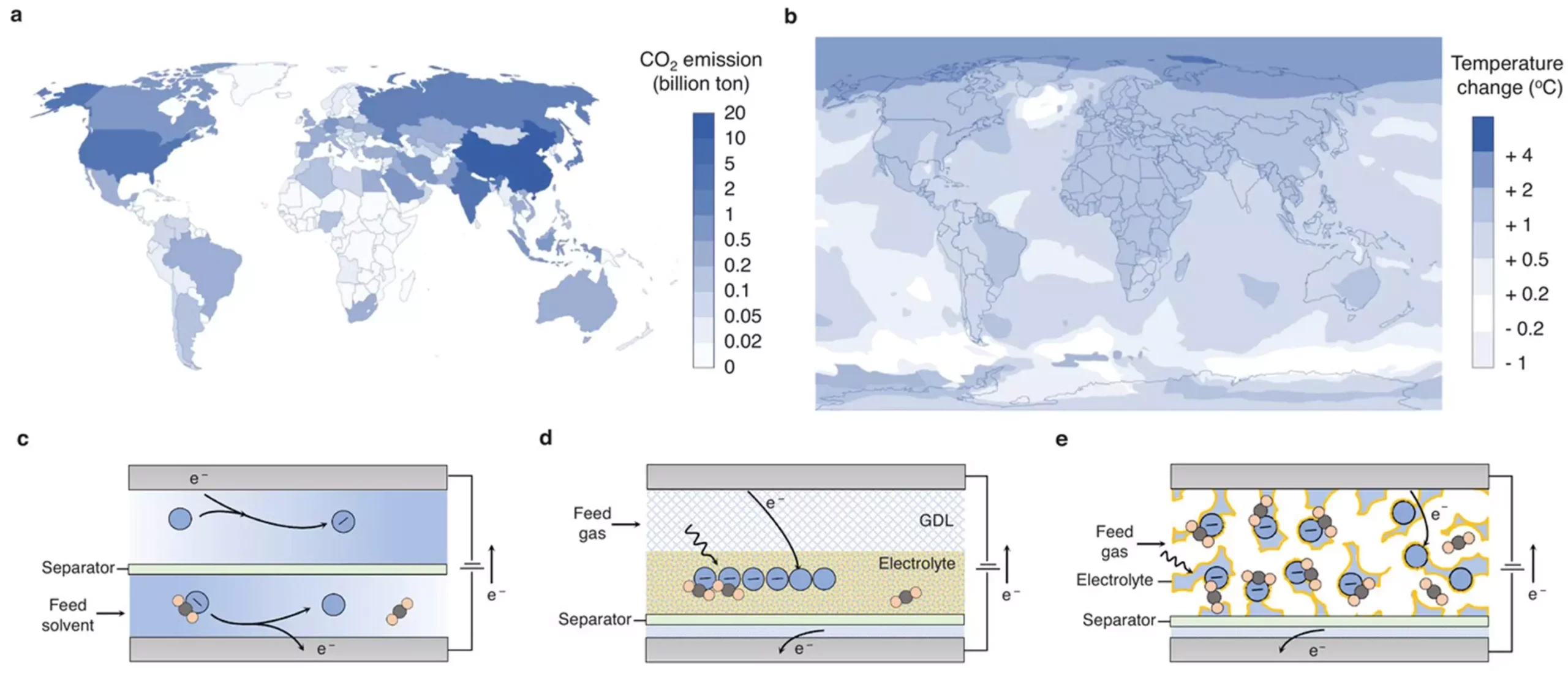

As the climate crisis intensifies, the demand for effective carbon capture technologies becomes imperative. Recent advancements have unveiled a groundbreaking material, promising to reshape how we capture carbon dioxide (CO2), particularly from low-concentration sources. The study, published in Advanced Materials, details the development of porous polymeric electrodes (PPEs), which offer a novel approach to improving CO2 removal efficiency. This innovative effort, led by Professor T. Alan Hatton and his research team, marks a pivotal step toward more effective climate change mitigation.
At the heart of this innovation lies a unique combination of materials that leverage their collective properties for enhanced performance. The PPEs are constructed from a base of melamine foam, which is then coated with polyvinyl alcohol and enhanced with carbon nanotubes and quinone molecules. This carefully engineered structure not only promotes superior gas transport but also enhances the interaction between the CO2 and the capture medium. By maximizing the active surface area, the electrodes are designed for optimal capture capabilities, significantly pushing the boundaries of current technologies.
The efficacy of these PPEs is particularly noteworthy, achieving a CO2 capture capacity ranging from 30 to 80 kg per cubic meter per day, heavily reliant on the concentration of CO2. This performance reflects a substantial advancement over previous carbon-capturing technologies, with the new electrodes boasting a 90% utilization rate of active capture materials. Furthermore, they were tested to maintain their superior capabilities over 100 capture-release cycles, underscoring their durability and stability, especially in humid environments. Such resilience is crucial for real-world applicability, paving the way for their use in diverse settings ranging from direct air capture to emissions reduction in industrial processes.
The introduction of porous polymeric electrodes comes at a time when the urgency to combat climate change has reached a critical peak. With the latest reports from the Intergovernmental Panel on Climate Change signaling the need for robust carbon capture technologies, innovations like these PPEs could substantially bolster international efforts to achieve net-zero emissions. By offering a more compact and potentially cost-effective solution that eliminates the need for separate gas diffusion layers, the new electrodes may provide a scalable option for widespread deployment.
Despite these promising results, there remains a challenge of scaling these advancements for broad application. The research team acknowledges this and is now working on further optimizing the electrodes for a variety of operational conditions. The ultimate goal is to make the technology viable for large-scale production, thereby enhancing its contribution to global emissions reduction efforts. As we continue to seek solutions to address the ongoing climate crisis, the evolution of porous polymeric electrodes signifies hope, demonstrating that scientific innovation can indeed pave the way for a more sustainable future.
Rogue waves have long been a subject of fascination and terror in maritime lore. These…
As the world grapples with public health challenges, especially those posed by infectious diseases, the…
The Sombrero Galaxy, also known as Messier 104, embodies a breathtaking blend of spirals and…
In recent advances in quantum electronics, a groundbreaking discovery leveraging the concept of kink states…
In the intricate tapestry of nature, ice often exists in a delicate balance with liquid…
In an astonishing event that captured global attention, a rogue object from beyond our Solar…
This website uses cookies.